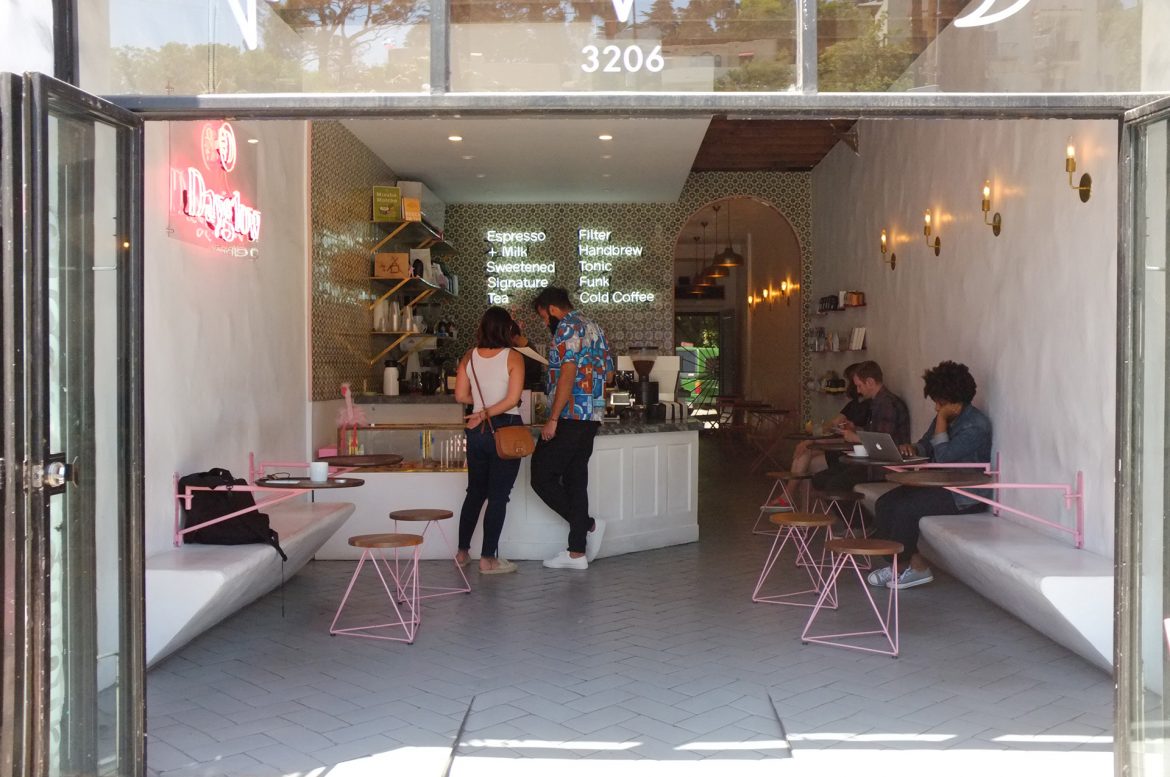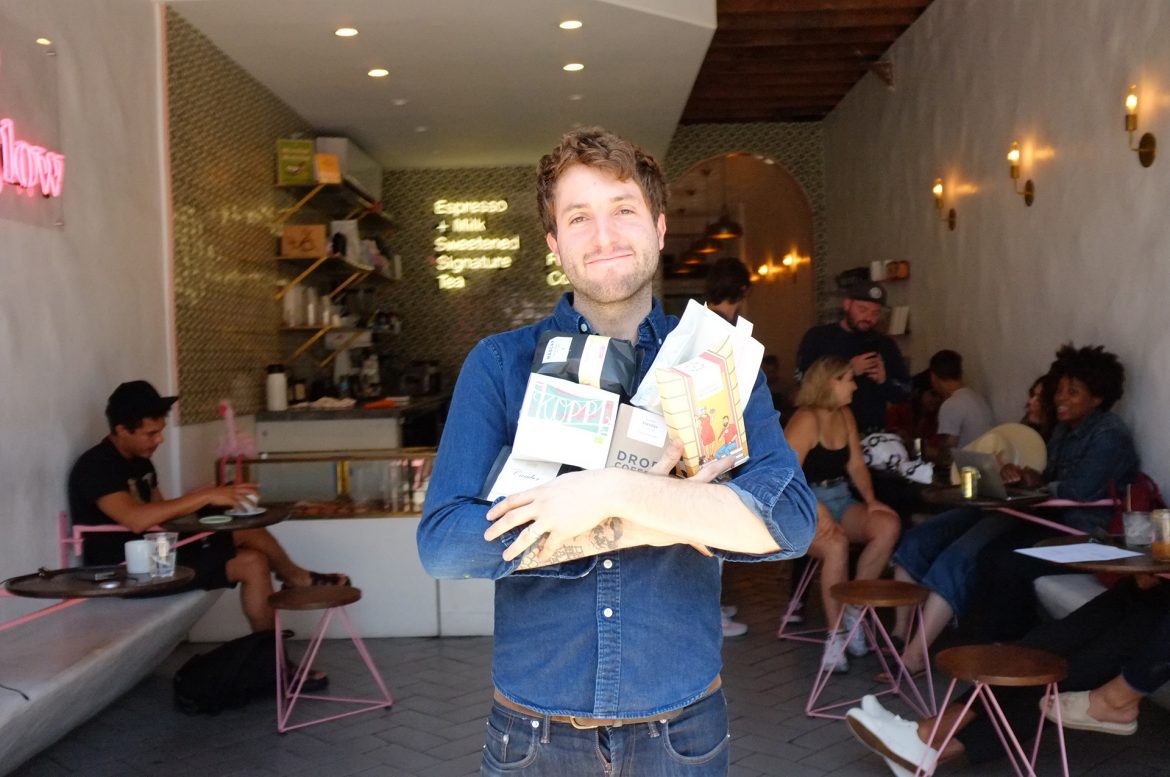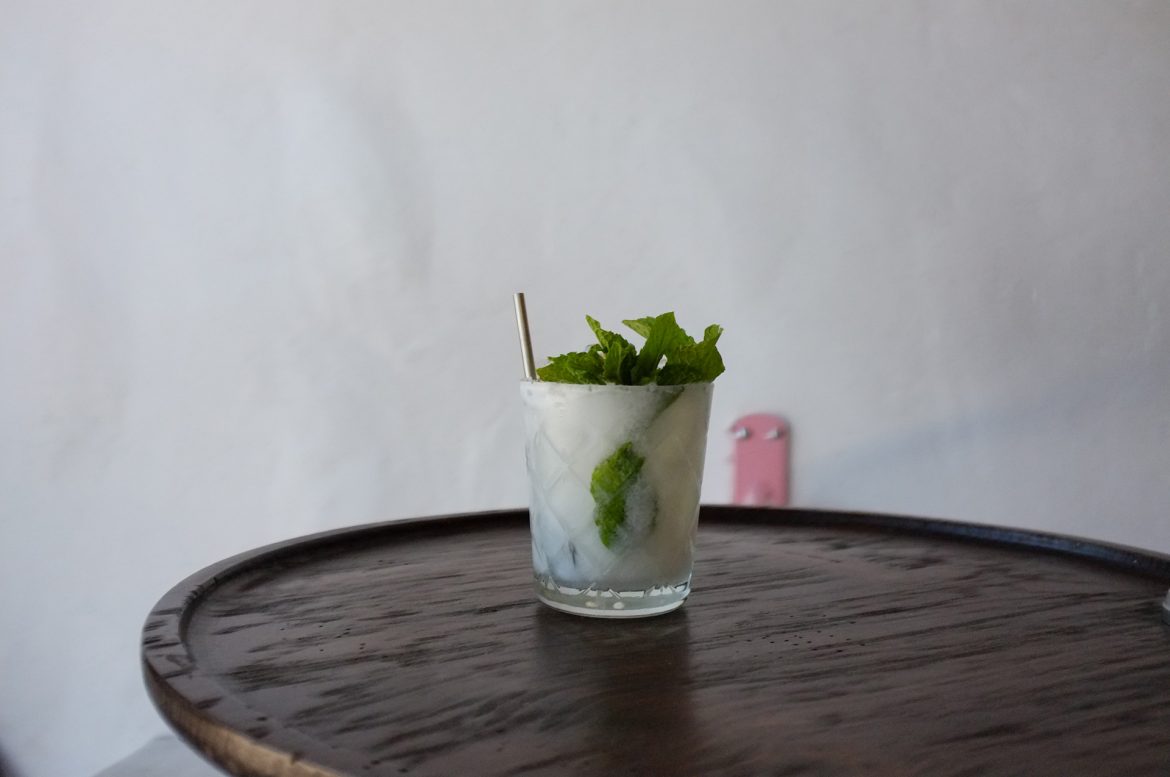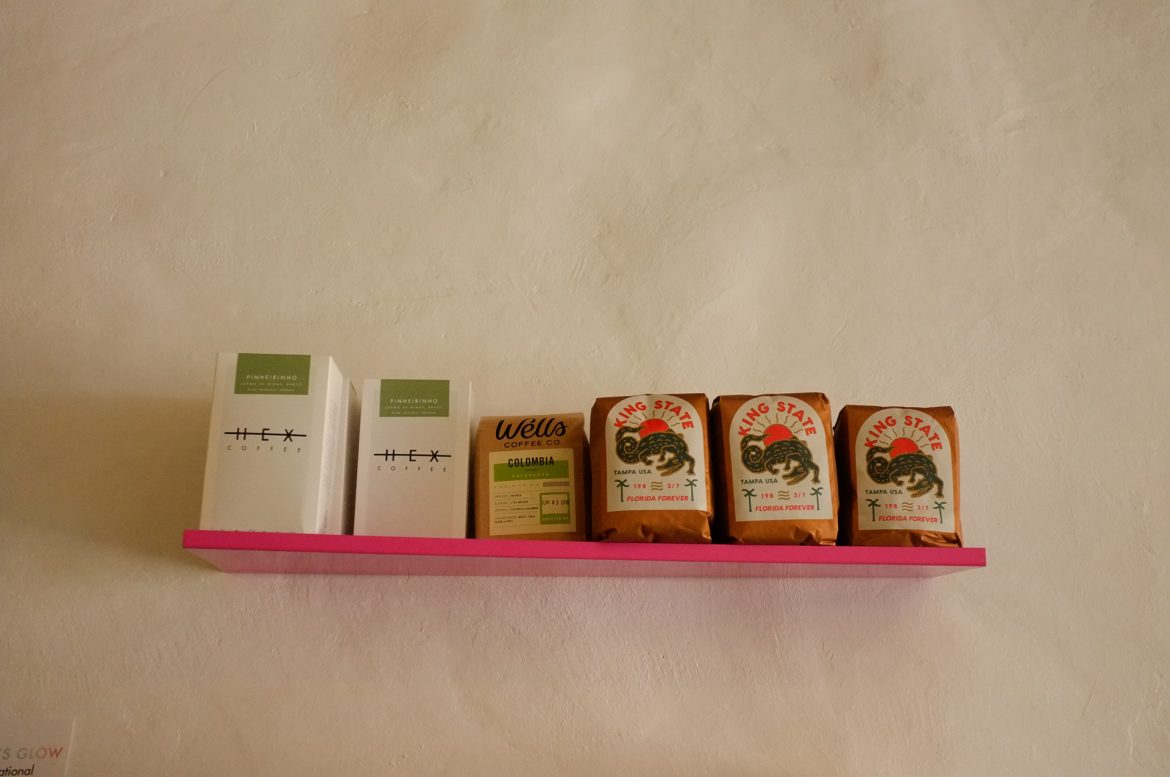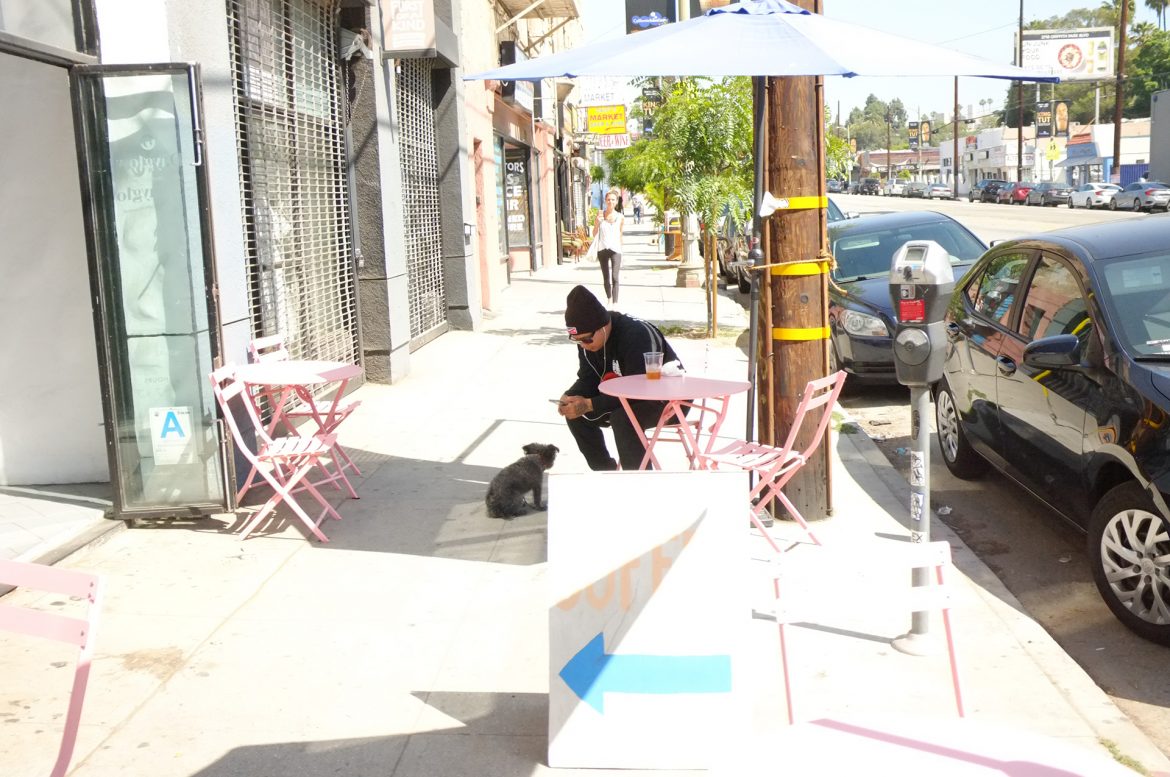Un espresso: 20-30 ml de delicioso café. Beberlo solo toma algunos minutos. Pero lleva años producirlo. Desde seleccionar cuidadosamente y plantar el árbol de café hasta cosechar, procesar y secar los granos, el trabajo de un productor nunca se detiene.
Pero, ¿cómo deciden los productores qué café cultivar? ¿Cómo lo cosechan? ¿Qué implica el procesamiento y secado?
Read this in English From Seed to Cup: How Do Producers Grow Coffee?
 Plantas de café en el vivero de Fazenda Bella Época en Brasil. Crédito: Ana Valencia
Plantas de café en el vivero de Fazenda Bella Época en Brasil. Crédito: Ana Valencia
Eligiendo el Café Adecuado Para Cultivar
Hay más de un tipo de café. Algunas variedades producen granos de alta calidad, pero son susceptibles a enfermedades. Otras son más resistentes. Algunas tienen mayor rendimiento que otras, algunas son más dulces y otras se adaptan a ciertos tipos de suelo.
Entonces, ¿cómo elige un productor el café que va a cultivar?
Valentina Pedrotti, bióloga del ICFC Panamá y analista de la cadena de valor del café, me dijo que esto varía de país a país. El clima y la cultura local a menudo determinan la elección del productor. Muchos simplemente cultivan lo que es común en un área determinada o lo que siempre se ha cultivado en su tierra.
Pero el suelo, la altitud, la humedad y otras características climáticas tienen un impacto en el sabor del café final, por lo que es importante elegir sabiamente. Otros temas a considerar incluyen el costo y el valor esperado en el mercado para los granos, y si las enfermedades y las plagas son un problema.
En algunos países, existen asociaciones cafeteras nacionales, como la Federación Nacional de Cafeteros (FNC) en Colombia o Anacafé en Guatemala. Es posible que los productores elijan cultivar una variedad de café recomendada por estas asociaciones. La FNC, por ejemplo, invierte en la investigación y el desarrollo de variedades resistentes a enfermedades como Colombia y Castillo.
Y la disponibilidad de algunas semillas es una limitación constante. Tomemos como ejemplo los híbridos F1, como Starmaya. Es de alta calidad, alto rendimiento y altamente resistente a las enfermedades, en otras palabras, la planta de café ideal. Sin embargo, es una variedad nueva y solo pocos productores tiene acceso a ella actualmente.
Con todos estos aspectos para considerar, puede ser difícil elegir la mejor variedad. Arturo Aguirre de la premiada Finca El Injerto en Guatemala, me dijo que es importante que los productores conozcan su tierra. “Debes saber dónde está realmente tu finca”. La ubicación y el suelo son factores decisivos para determinar si ciertas variedades pueden desarrollarse.
Aguirre también dijo que se debe tener en cuenta que toma alrededor de tres años saber si una nueva variedad prosperará en la finca o no. Después de todo, ese es el tiempo que tarda un árbol en madurar.
Descubre algunas de las variedades más comunes Geisha vs Bourbon: Un Curso Intensivo de Variedades de Café
 Plántulas de café en su período de crecimiento controlado; más tarde, serán plantadas en la finca.
Plántulas de café en su período de crecimiento controlado; más tarde, serán plantadas en la finca.
Plantar La Semilla
Hemos elegido la variedad, ¿y ahora qué?
Ricardo Álvarez, agrónomo de la Finca Los Tres Potros en El Salvador, me dijo que, para las dos primeras etapas del proceso de cultivo de café, la temperatura es mucho más importante que la elevación. Por ejemplo, el rango de temperatura ideal para el Arábica es de 18 ° C – 21 ° C (64 ° -70 ° F). Si la temperatura es superior, la planta se puede estresar.
Álvarez me explicó que comienza con un semillero lleno de arena tratada para estimular la germinación y el crecimiento inicial, y también prevenir enfermedades. Estas semillas de café permanecen en el semillero por 70 días.
Luego, trasplanta las plántulas a bolsas individuales que contienen de una mezcla de tierra fértil. Las plantas jóvenes permanecen en el vivero durante un tiempo de entre 7 meses un año. También las cubre con envoltura de plástico para controlar la cantidad de luz. En esta fase, es esencial que las raíces principales crezcan verticalmente para dar estabilidad y permitir que la planta viva por más tiempo.
También te puede gustar Variedades de Café: No Todos Los Gesha Tienen El Mismo Sabor
 Productor de Nicaragua poda la planta antes de cosechar las cerezas. Crédito: Maren Marbee via Flickr, CC BY 2.0
Productor de Nicaragua poda la planta antes de cosechar las cerezas. Crédito: Maren Marbee via Flickr, CC BY 2.0
Cuidar La Planta de Café
Álvarez enfatizó en que antes de sembrar plántulas en la finca, es importante decidir con qué densidad se deberían plantar los árboles. El productor lo decide basándose en cómo podará y realizará su sistema de zoca para las plantas más adelante. También debe considerar cómo se llevará a cabo la cosecha y las características de cada variedad.
¡Aprende más! Lee ¿Por qué Sembrar Café en Filas?
El mantenimiento es necesario para que las plantas de café duren y para que la producción sea consistente. Es importante podar o recortar las ramas productoras y los troncos verticales principales después de cada cosecha.
Además, la planta debe pasar por zoca regularmente para asegurar un buen rendimiento. Esto significa que cada planta se corta a 30-40 cm desde abajo para permitir un nuevo crecimiento. La frecuencia con la que se debe hacer esto depende de muchos factores, incluida la densidad de siembra y la cantidad de sombra. Las plantas pasadas por zoca no darán fruto hasta que vuelvan a crecer, por lo que es importante dividir la finca en lotes e intercalar el zoqueo.
Los productores también pueden necesitar volver a plantar por completo determinados lotes en su finca después de que los árboles alcancen cierta edad.
 Recolectores de café cosechan cerezas maduras en Laos. Crédito: Thomas Schosch via Wikimedia Commons, CC BY-SA 3.0
Recolectores de café cosechan cerezas maduras en Laos. Crédito: Thomas Schosch via Wikimedia Commons, CC BY-SA 3.0
La nutrición de las plantas de café ocurre en la hoja y la raíz, y ninguna de ellas debe descuidarse. Álvarez me dijo que es extremadamente importante cuidar el suelo y mantenerse al día con el calendario de fertilización para proporcionar a las plantas la nutrición que necesitan.
Durante la temporada de lluvias, la limpieza de maleza ayudará a prevenir el desarrollo de enfermedades. En otras épocas del año, los productores deben estar atentos a la roya. Esta infección por hongos es extremadamente común y puede devastar los cultivos al dañar las hojas, que son necesarias para convertir la luz solar en energía. En otras palabras, sin las hojas, la planta no puede sobrevivir.
Para las fincas que cultivan bajo sombra, Álvarez también resaltó la importancia del mantenimiento de la misma. La cantidad de sombra necesaria para producir una buena cosecha dependerá de la elevación de la finca y de la especie de café, pero el mantenimiento adecuado de la sombra permitirá que las plantas maduren a la velocidad ideal.
¡Conoce más! Lee Guía Para Cultivar Árboles de Café Saludables
De la Finca a La Taza
Cada año, los árboles florecen después de la temporada de lluvias. Pero, estas flores blancas delicadas, con sus dulces aromas, son más que bellas. Son importantes para el crecimiento de la cereza de café.
Con el café Arábica, hay un período de espera de nueve meses entre la floración y la cosecha de café. Pero este no es un período de descanso. El productor debe inspeccionar regularmente las cerezas en desarrollo para asegurarse de que estén madurando en el momento correcto, y también detectar plagas.
Y no subestimes la dificultad de la cosecha. La recolección de cerezas es una tarea larga y difícil, especialmente cuando los productores orientados hacia la calidad buscan cerezas perfectamente maduras. Clasificar la cosecha también es importante, y toma mucho tiempo. Incluso unos pocos granos de baja calidad o defectuosos pueden reducir la calidad de un lote, que de otro modo sería excelente.
Después de que las cerezas se hayan cosechado se deben procesar. Esto significa que se deben remover las semillas de café de las cerezas para luego pasarlas a la fase de secado.
Los principales factores a considerar durante el procesamiento son el clima, la luz solar y la infraestructura. Mientras se seca, también es importante mover los granos periódicamente para evitar la fermentación y el moho.
El procesamiento se puede hacer de muchas maneras, pero existen tres métodos principales:
- Natural: los granos se secan con la piel de la cereza, esto agrega dulzura y notas afrutadas. Puede ser más difícil lograr consistencia.
- Lavado: los granos se remueven de las cerezas y se fermentan en agua antes de secarse, esto genera un perfil limpio y consistente. Requiere más equipamiento que el procesamiento natural.
- Honey / despulpado natural: Parte de la fruta se elimina, dejando una cierta cantidad de mucílago en los granos durante el secado. Entre más mucílago se deje, el café será más dulce y tendrá más cuerpo. Este proceso implica un esfuerzo y riesgo mayores.
¡Lee más! Proceso 101: Lavado, Natural Y Honey Producción de Café
 Granos de café después del procesamiento. Crédito: Adam Jones via Flickr, CC BY-SA 2.0
Granos de café después del procesamiento. Crédito: Adam Jones via Flickr, CC BY-SA 2.0
Aguirre dijo: “Es muy difícil cultivar café. No solo el productor está luchando contra las adversidades de la naturaleza, sino que una taza de café requiere mucho trabajo, muchísima gente … Ese es el verdadero valor del café”.
Porque para muchas personas, una taza de café es una bebida diaria importante. Pero para los productores, representa días, meses y años de cuidado intensivo de sus cultivos. Son madrugadas y largas tardes bajo temperaturas frías. Es el trabajo de su vida.
¿Disfrutaste este artículo? Lee Conoce la Planta de Café
Escrito por Miguel Regalado.
Traducido por Alejandra M Hernández. Traducción editada por María José Parra.
¿Quieres seguir leyendo artículos como este? ¡Suscríbete Aquí!
The post Del Grano a La Taza: ¿Cómo Cultivan Café los Productores? appeared first on Perfect Daily Grind.
from RSSMix.com Mix ID 8200593 https://www.perfectdailygrind.com/2018/10/del-grano-a-la-taza-como-cultivan-cafe-los-productores/





 Barista pouring milk into a cup. Credit:
Barista pouring milk into a cup. Credit: 












